Background: Around six or seven Years ago, my family had a large oak tree cut down in our front yard, and I decided I wanted to make some sort of table or furniture out of the wood. When it was cut, we cut a large “slab” out of the stump of the tree, and let it sit and dry for a couple of years in our garage. When I was home for summer break from college two years ago, I built my end table from the wood, which I have used by my bed since then.
![]()
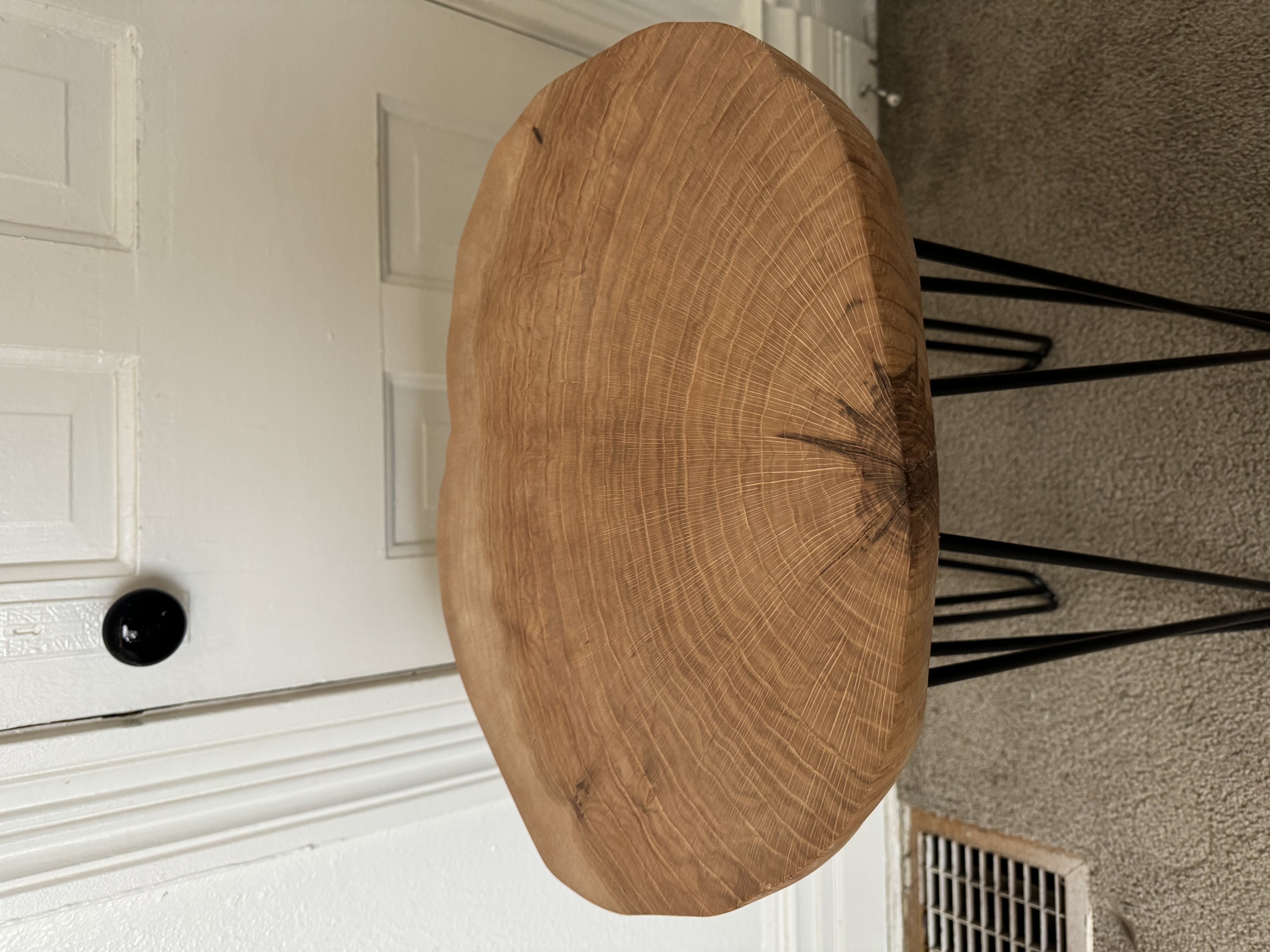
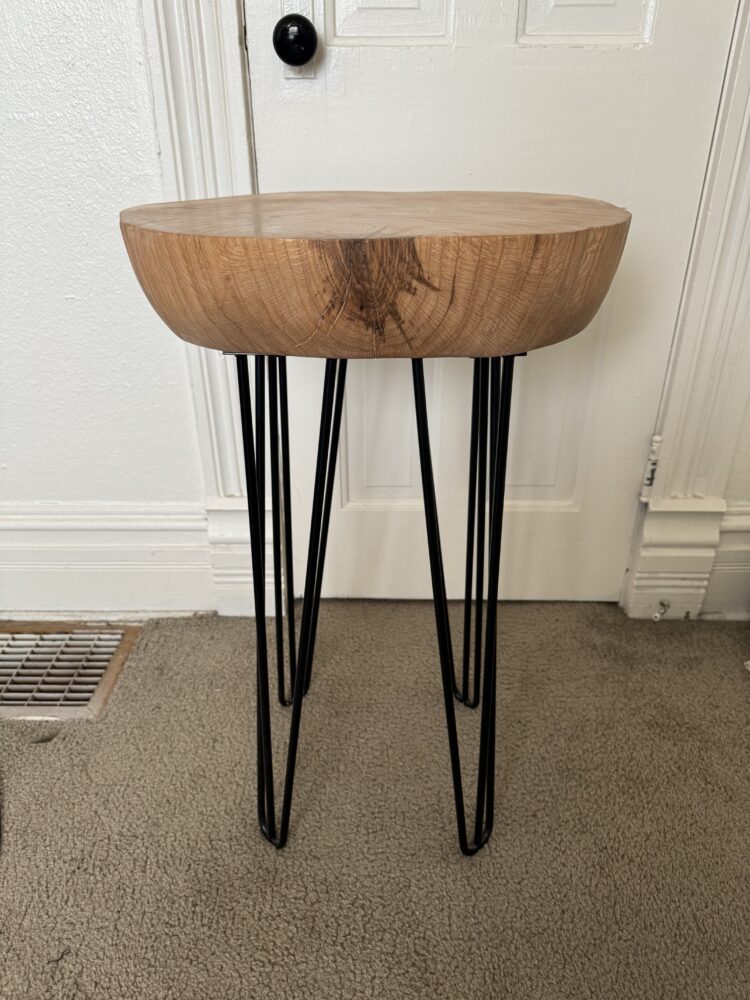
Although I loved how the table-top turned out, I have not liked the table legs that I bought for the table. The table top itself is about 4 to 5 inches thick, and these legs raise it much higher than is comfortable for my relatively low mattress. Additionally, the top of the legs, although put together as closely as possible, hang away from the back of the table. For both of these reasons, I have thought about replacing the legs of the table with something else, and this project was the perfect opportunity.
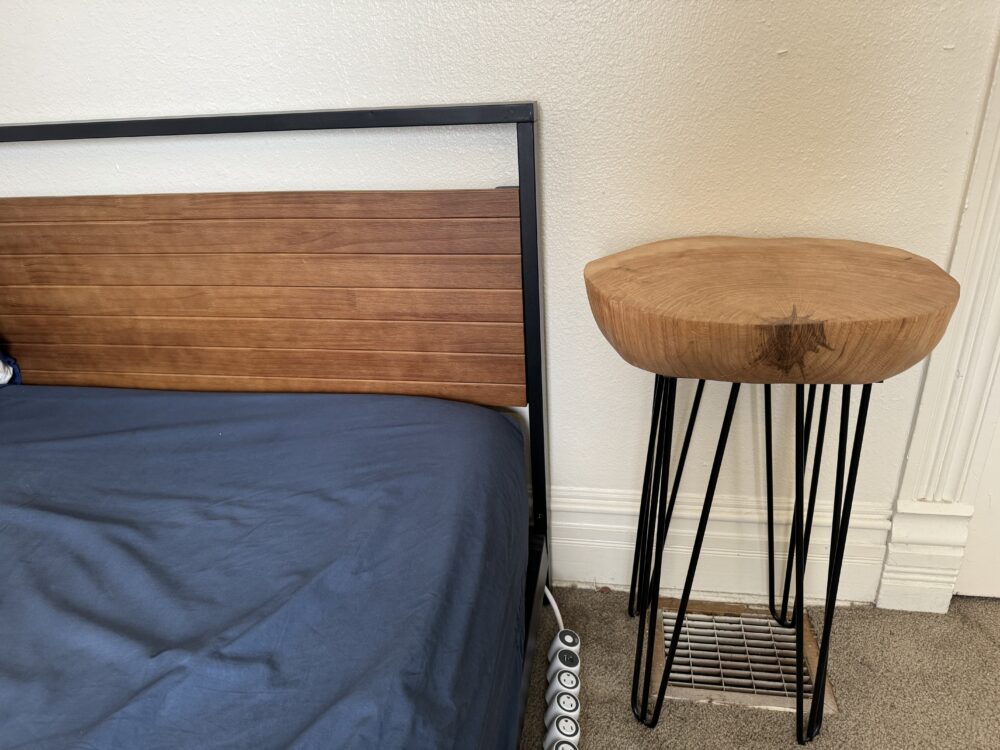
Introduction: For my project, I decided to create the stand of this end table by using old books, with the appearance of only being books. I decided that I wanted the project to appear as if there were only books holding up the table, with no other components.
For my design, I originally decided to have a single wooden dowel rod through the center of the books, which would be secured at the base of the stand, and the bottom of the table, allowing the books to spin freely in any orientation. As I started to collect books from friends, and eventually bought a couple from goodwill inexpensively, I realized that it would be difficult to find enough books of the color scheme that I desired to be able to reach the table height that I wanted.
As a result of having trouble finding enough books, I decided to build my current design, using 2 wooden dowel rods, and stacking two open books on their edges in the middle to increase the height. From this, I had the idea of using these books on their edges as a little compartment in the stand, which I implemented in my final design.
Construction: When it came time to construct my stand, I first started by stacking the books to get a general idea of how they would sit together, and then marking where to drill my holes for the dowel rods. These holes became much more difficult to drill than anticipated. As I drilled these holes, the paper did not drill like wood does, and the paper was very dense. Additionally, as I would drill through the books, the books would expand, resulting in my holes being unaligned, which caused warping in the dowel rods later on when they were added. After some time drilling, the drill bit started to get hot and actually burned some of the paper, so I had to douse some of the books in water as well. After the books had been drilled (and covering my kitchen in paper dust) I put the dowel rods into place and cut them to length.
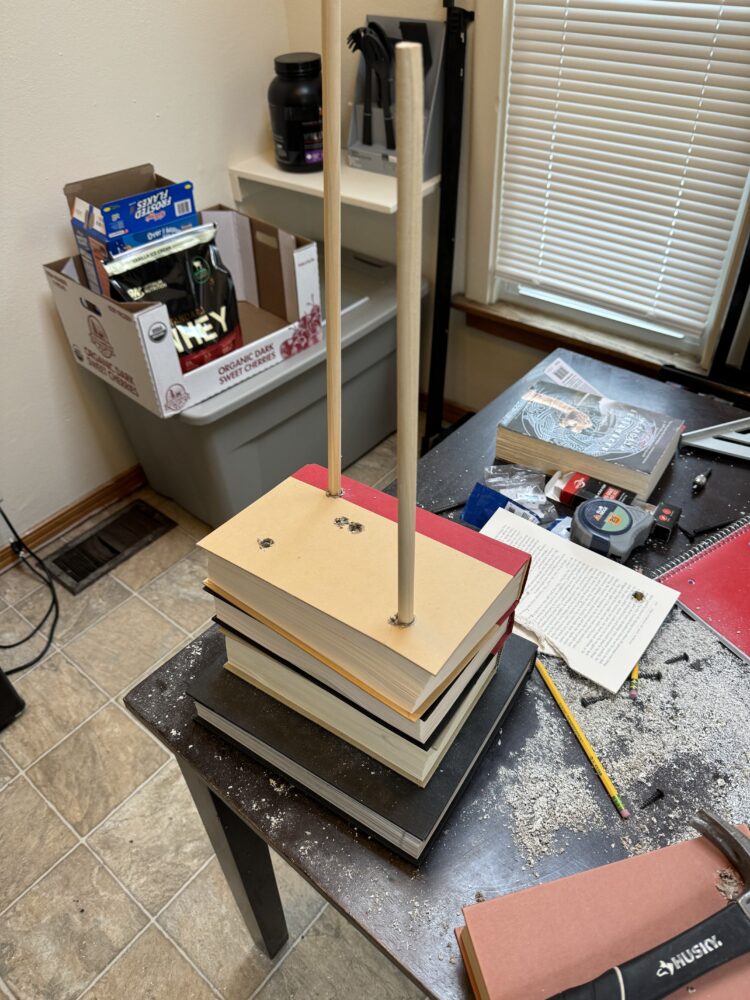
At this stage, I also cut a book in half and turned it on its edges, to create a hidden compartment in the stand. I also purchased a magnet made for a cabinet, so the door to the compartment can be held closed magnetically.
To secure the top of the table, I originally wanted to use a short section of 1 inch diameter wooden dowel rod attached to the base of the table that would fit into a hole in the top book. I tried to do this, and had issues getting the table to sit level with the books. In the end, I decided to use a screw in the bottom of the table, and drilled a matching hole in the top book to hold it in place.
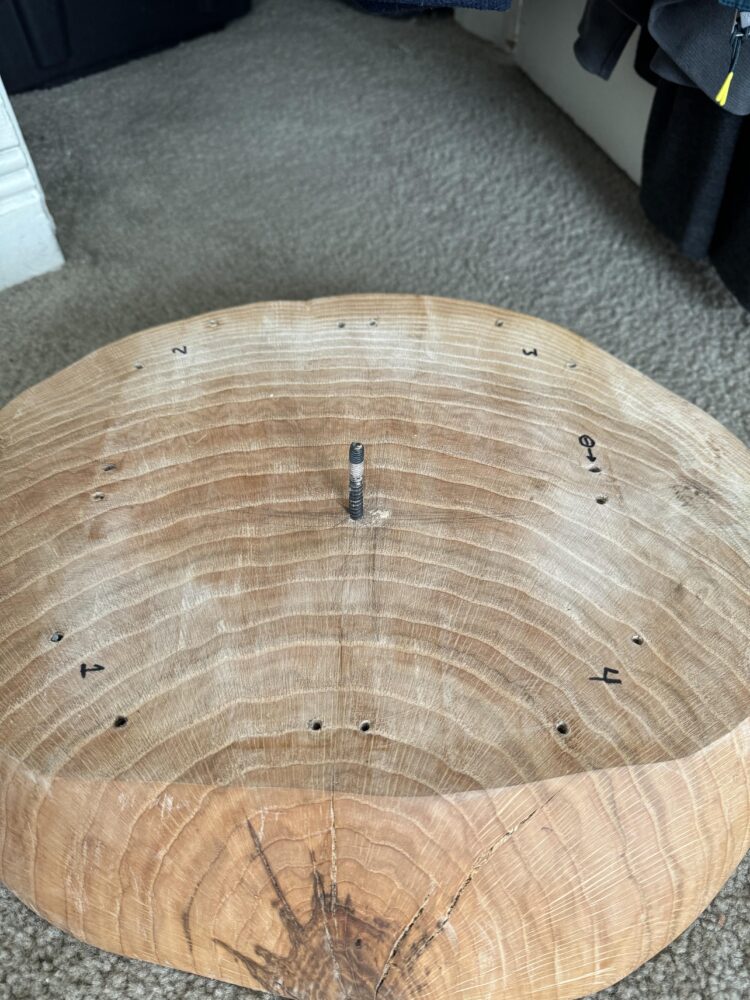
Final Product: Once the table mounting screw and matching hole were finished, I placed the table on top, and the stand was finished.
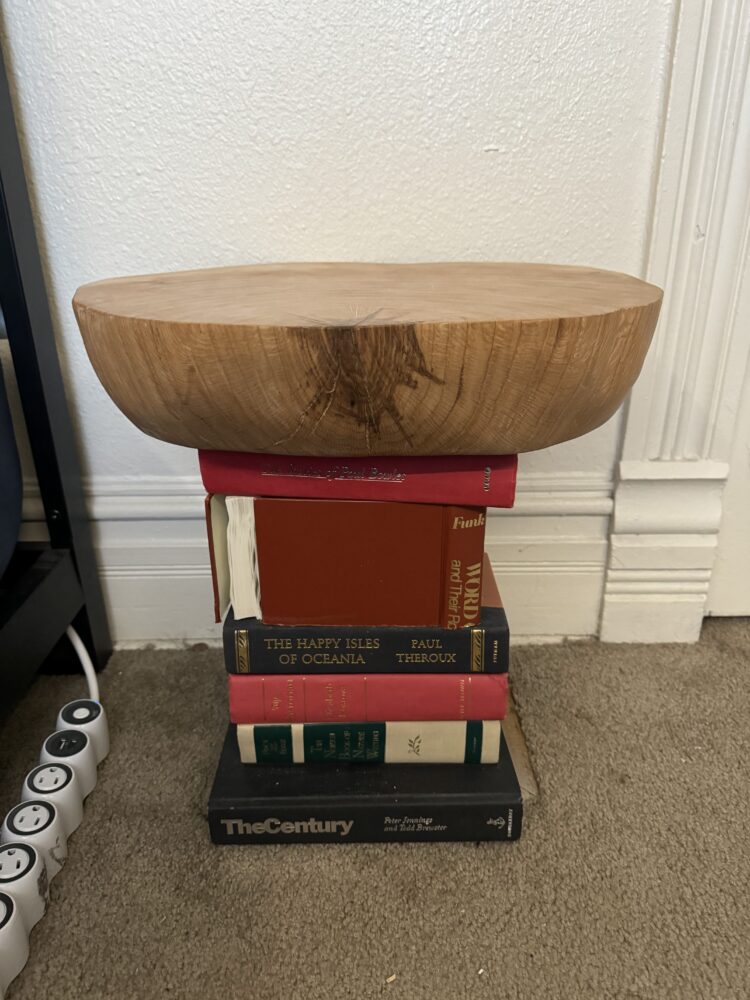
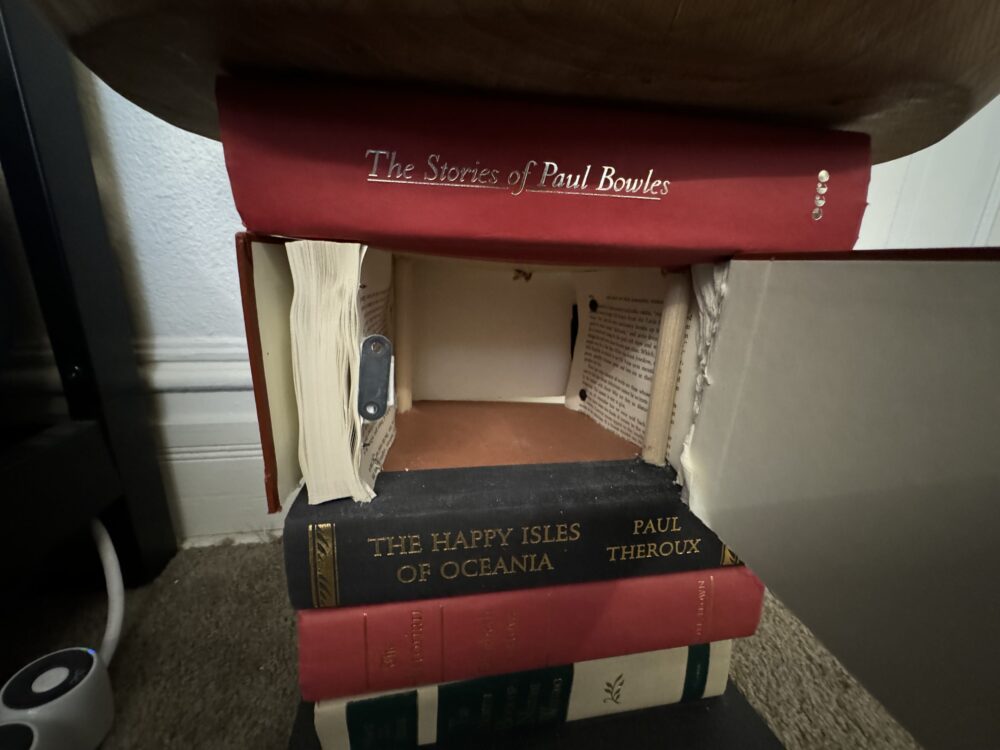
In terms of functionality, this stand is not incredibly stable, and needs to be leaning up against my wall to stay up properly. If I was to do this project again, I would probably add a piece of wood at the base to connect to the dowel rods, which would hold the table steady. Additionally, the table top itself can tilt, so I have put some shims underneath to prevent this and keep it level.
I am happy with the height of the design however, as it now is closer to the height of my mattress.
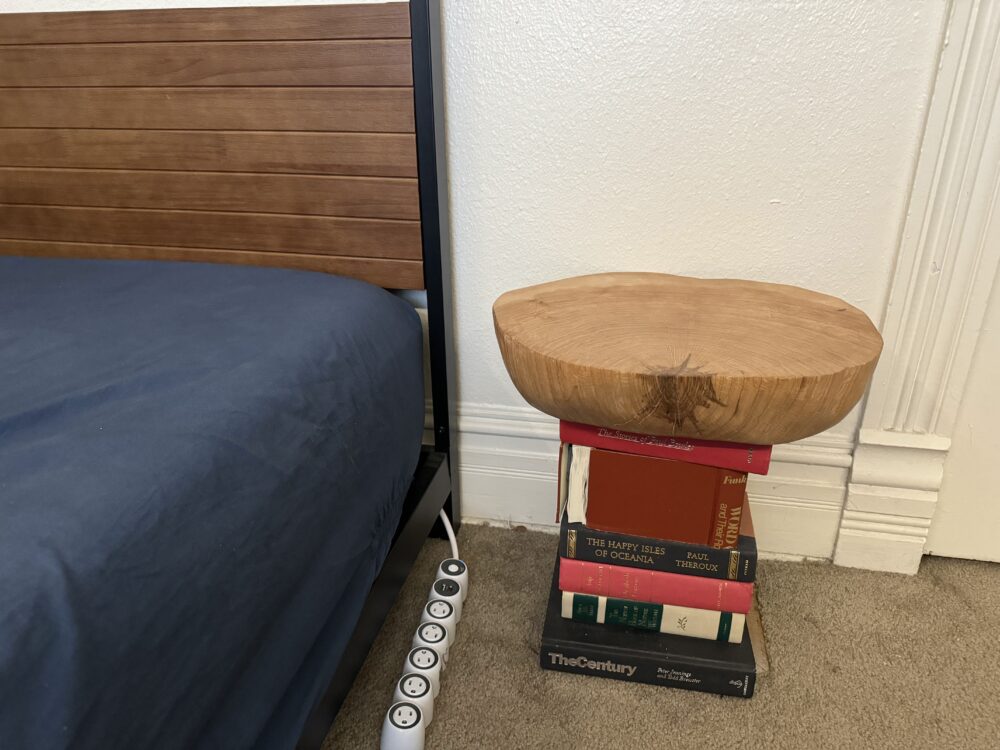
Aesthetic: For this build, I was trying to reach an aesthetic of something that looks unassuming, but is more than it appears to be. From the outside, it just appears to be a table stacked on some books, but in reality there is a frame underneath supporting the table, and a hidden compartment.
If I was to build this stand again to meet an aesthetic more accurately, I would try to get books that are more color coordinated.
![]()

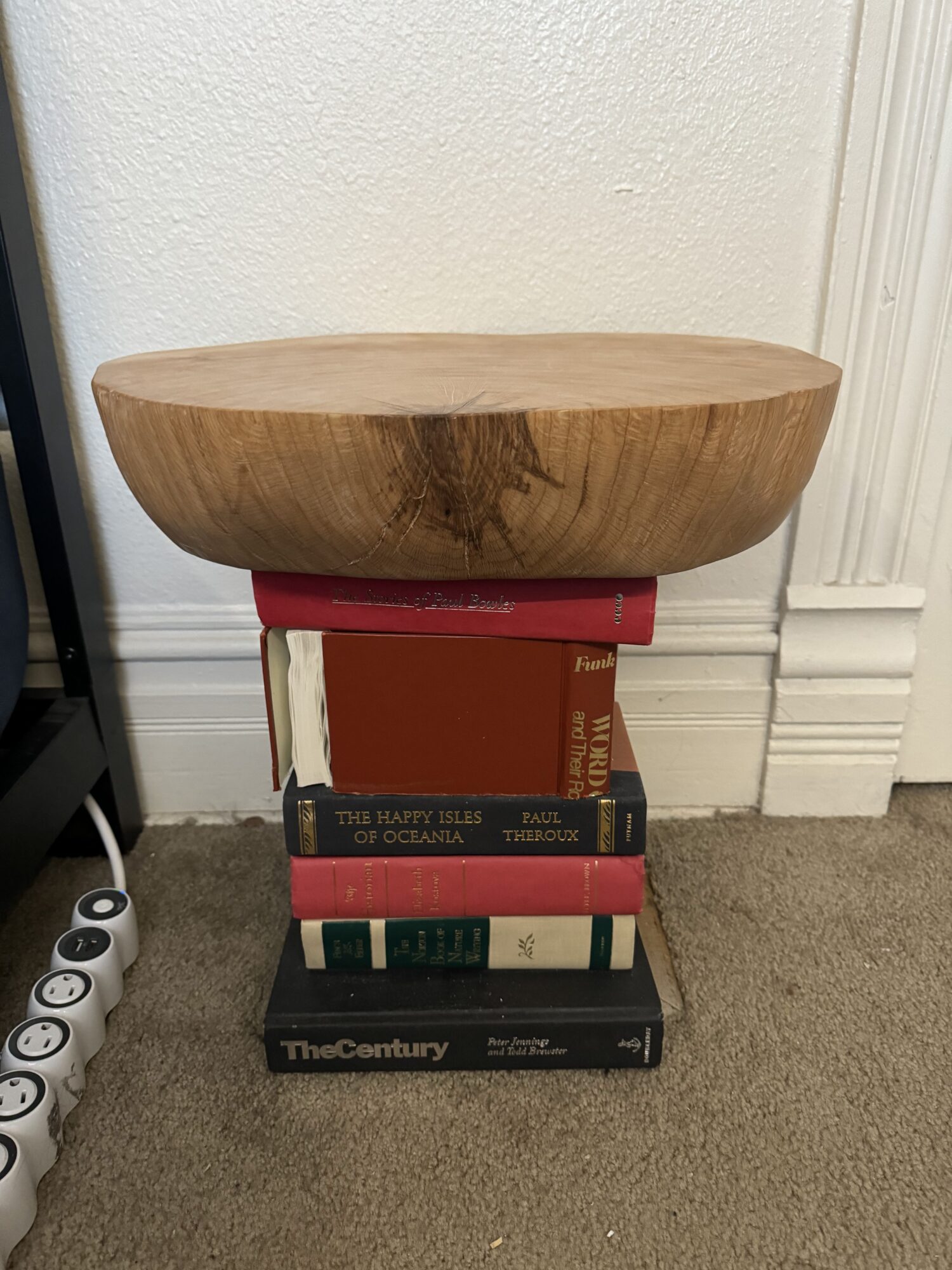
4 Comments. Leave new
Travis,
This is a really interesting design. There are similarities in our projects, wherein we both upcycled old books. I think the unassuming aesthetic is well displayed through your piece. My question is how long do you think those wooden dowels will be able to support the oak slab? I could definitely see structural problems in the future.
Hi Chris,
Unfortunately after a coupple of weeks using this end table, the books started to lean and my table was falling over. I do think that the wooden dowel rods were not enough support.
Hi Travis,
This is a really cool idea! I love the idea of converting the old books into a simplistic and unassuming design aesthetic for the table! That is quite the slab of oak wood, it’s nice how much thought you gave into properly supporting it. My primary question was – Does the base of the table covering the heating vent create any issues for the books or the room temperature?
Hi Jace,
Yes, unfortunately the base of the table was covering the heating vent in my room, and it was starting to get cold in there. I had some other structural issues with the table as well, and ended up putting the old table legs back on.